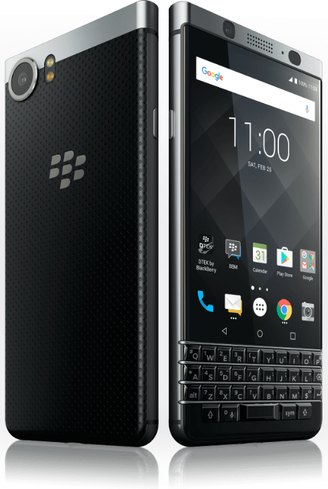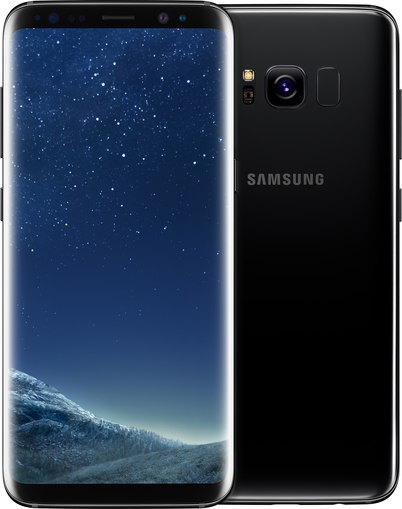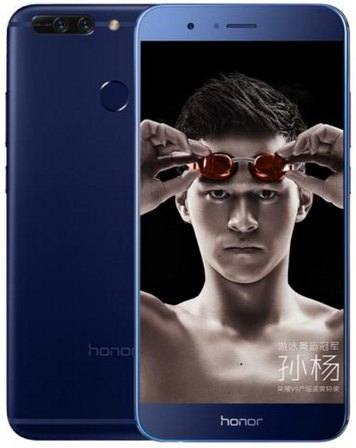If you would like to add more datasheets to the comparison table you can still find and add them around the site while browsing, querying or searching Device Specs. Meanwhile you will not lose the comparison table below. Furthermore unnecassary datasheets can be removed by clicking on the "Remove from comparison" buttons (ever more than one item during one page load) but in this case reloading the table will be needed. Then click again on the appropriate header "Compare" button.
|
|
| | |
|
Use the following link to refer to this comparison |

| 
| 
|
|
Remove all |
|  Add to compare Add to compare | |  Add to compare Add to compare | |  Add to compare Add to compare |
 Introduction Introduction |
Released |
2017 May 29 |
2017 Apr 21 |
2017 Feb 28 |
Announced |
2017 Feb 25 |
2017 Mar |
2017 Feb 21 |
Hardware Designer |
TCL |
Samsung Electronics |
Huawei |
Manufacturer |
TCL |
Samsung Electronics |
Huawei |
General Extras |
Haptic touch feedback |
Haptic touch feedback |
Haptic touch feedback |
Device Category |
Smartphone |
Smartphone |
Smartphone |
 Physical Attributes Physical Attributes |
Width |
72.39 mm |
68.1 mm |
77.5 mm |
Height |
149.1 mm |
148.9 mm |
157 mm |
Depth |
9.4 mm |
8 mm |
6.97 mm |
| Dimensions
| 2.85x5.87x0.37 inches |
2.68x5.86x0.31 inches |
3.05x6.18x0.27 inches |
Mass |
180 g |
155 g |
184 g |
|
6.35 ounces |
5.47 ounces |
6.49 ounces |
 Software Environment Software Environment |
Platform |
Android |
Android |
Android |
Operating System |
Google Android 7.1 (Nougat) |
Google Android 7.0 (Nougat) |
Google Android 7.0 (Nougat) |
|
|
|
Chinese |
Software Extras |
Voice Command,
Navigation software |
Voice Command,
Navigation software,
Augmented Reality (AR),
Virtual Reality (VR) support,
Intelligent personal assistant |
Voice Command,
Navigation software,
Virtual Reality (VR) support |
 Application processor, Chipset Application processor, Chipset |
CPU Clock |
2020 MHz |
2300 MHz |
2400 MHz |
CPU |
Qualcomm Snapdragon 625 MSM8953, 2016, 64 bit, octa-core, 14 nm, Qualcomm Adreno 506 GPU |
Samsung Exynos 9 Octa 8895M, 2017, 64 bit, octa-core, 2560 Kbyte L2, 10 nm, ARM Mali-G71 GPU |
HiSilicon Honor KIRIN960 Hi3660, 2016, 64 bit, octa-core, 64 Kbyte I-Cache, 64 Kbyte D-Cache, 16 nm, ARM Mali-G71 GPU |
 Operative Memory Operative Memory |
RAM Type |
LPDDR3 SDRAM |
LPDDR4x SDRAM |
LPDDR4 SDRAM |
|
933 MHz |
1794 MHz |
1800 MHz |
RAM Capacity (converted) |
3 GiB RAM |
4 GiB RAM |
6 GiB RAM |
|
2866 MiB user accessible RAM |
3481 MiB user accessible RAM |
|
 Non-volatile Memory Non-volatile Memory |
Non-volatile Memory Interface |
eMMC 5.1 |
UFS 2.1 |
Yes |
Non-volatile Memory Capacity (converted) |
32 GB ROM |
64 GB ROM |
128 GB ROM |
|
22000 MiB total user storage |
55270 MiB total user storage |
|
 Display Display |
Display Diagonal |
113.7 mm |
146.5 mm |
144 mm |
|
4.5 inch |
5.8 inch |
5.7 inch |
Resolution |
1080x1620 |
1440x2960 |
1440x2560 |
Horizontal Full Bezel Width |
9.32 mm |
4.01 mm |
6.9 mm |
Display Area Utilization |
55.3% |
83.3% |
72.8% |
Pixel Density |
435 PPI |
571 PPI |
518 PPI |
Display Type |
Color IPS TFT LCD display |
AM-OLED display |
Color IPS TFT LCD display |
| Display Subtype
| No |
Super AM-OLED |
No |
Number of Display Scales |
16.8M |
16.8M |
16.8M |
Scratch Resistant Screen |
Gorilla Glass 4 |
Gorilla Glass 5 |
Yes |
 Graphical Subsystem Graphical Subsystem |
Graphical Controller |
Qualcomm Adreno 506 |
ARM Mali-G71MP20 |
ARM Mali-G71MP8 |
Dedicated Graphics Memory |
0.125 MiB |
|
|
| GPU Clock |
650 MHz |
546 MHz |
900 MHz |
 Audio/Video Interfaces Audio/Video Interfaces |
 Audio Subsystem Audio Subsystem |
Microphone(s) |
stereo |
stereo |
Yes |
| Loudspeaker(s) |
mono |
mono |
mono |
| Audio Output |
3.5mm |
3.5mm |
3.5mm |
 Cellular Phone Cellular Phone |
Supported Cellular Bands |
GSM850,
GSM900,
GSM1800,
GSM1900,
UMTS2100 (B1),
UMTS1900 (B2),
UMTS1700/2100 (B4),
UMTS850 (B5),
UMTS900 (B8),
LTE2100 (B1),
LTE1900 (B2),
LTE1800 (B3),
LTE1700/2100 (B4),
LTE850 (B5),
LTE2600 (B7),
LTE900 (B8),
LTE700 (B12),
LTE700 (B13),
LTE700 (B17),
LTE800 (B19),
LTE800 (B20),
LTE700 (B28),
LTE700 (B29),
LTE2300 (B30),
TD-LTE2600 (B38),
TD-LTE1900 (B39),
TD-LTE2300 (B40),
TD-LTE2500 (B41) bands |
GSM850,
GSM900,
GSM1800,
GSM1900,
UMTS2100 (B1),
UMTS1900 (B2),
UMTS1700/2100 (B4),
UMTS850 (B5),
UMTS900 (B8),
TD-SCDMA2000,
TD-SCDMA1900,
LTE2100 (B1),
LTE1900 (B2),
LTE1800 (B3),
LTE1700/2100 (B4),
LTE850 (B5),
LTE2600 (B7),
LTE900 (B8),
LTE700 (B12),
LTE700 (B13),
LTE700 (B17),
LTE800 (B18),
LTE800 (B19),
LTE800 (B20),
LTE1900 (B25),
LTE850 (B26),
LTE700 (B28),
TD-LTE2600 (B38),
TD-LTE1900 (B39),
TD-LTE2300 (B40),
TD-LTE2500 (B41),
TD-LTE3500 (B42),
LTE1700/2100 (B66) bands |
GSM850,
GSM900,
GSM1800,
GSM1900,
UMTS2100 (B1),
UMTS1900 (B2),
UMTS1700/2100 (B4),
UMTS850 (B5),
UMTS800 (B6),
UMTS900 (B8),
UMTS800 (B19),
CDMA800 (BC0),
TD-SCDMA2000,
TD-SCDMA1900,
LTE2100 (B1),
LTE1900 (B2),
LTE1800 (B3),
LTE1700/2100 (B4),
LTE850 (B5),
LTE800 (B6),
LTE2600 (B7),
LTE700 (B12),
LTE700 (B17),
LTE800 (B18),
LTE800 (B19),
LTE800 (B20),
LTE850 (B26),
TD-LTE2600 (B38),
TD-LTE1900 (B39),
TD-LTE2300 (B40),
TD-LTE2500 (B41) bands |
Supported Cellular Data Links |
GPRS,
EDGE,
UMTS,
HSUPA,
HSUPA 5.8,
HSDPA,
HSPA+ 21.1,
DC-HSDPA 42.2,
LTE,
LTE 100/50,
LTE 150/50,
LTE 300/50 data links |
GPRS,
GPRS C12,
EDGE,
EDGE MSC12,
UMTS,
HSUPA,
HSUPA 5.8,
HSDPA,
HSPA+ 21.1,
DC-HSDPA 42.2,
TD-SCDMA,
TD-HSDPA,
LTE,
LTE 150/50,
LTE 300/50,
LTE 600/50 data links |
GPRS,
EDGE,
UMTS,
HSUPA,
HSUPA 5.8,
HSDPA,
HSPA+ 21.1,
DC-HSDPA 42.2,
cdmaOne,
CDMA2000 1x,
CDMA2000 1xEV-DO,
CDMA2000 1xEV-DO Rev A,
TD-SCDMA,
TD-HSDPA,
LTE,
LTE 100/50,
LTE 150/50,
LTE 300/50,
LTE 450/50 data links |
SIM Card Slot |
Nano-SIM (4FF) |
Nano-SIM (4FF) |
Nano-SIM (4FF) |
Complementary Phone Services |
Voice transmission,
Voice speaker,
Vibrate,
Speakerphone,
ANC,
HD Voice,
VoLTE |
Voice transmission,
Voice speaker,
Vibrate,
Speakerphone,
ANC,
HD Voice,
VoLTE |
Voice transmission,
Voice speaker,
Vibrate,
Speakerphone,
ANC,
HD Voice,
VoLTE |
SAR (head) |
0.470 W/kg |
0.380 W/kg |
|
SAR (body) |
1.310 W/kg |
0.750 W/kg |
|
2nd highest SAR (head) |
|
0.340 W/kg |
|
2nd highest SAR (body) |
|
0.610 W/kg |
|
 Secondary Cellular Phone Secondary Cellular Phone |
Dual Cellular Network Operation |
No |
No |
Dual standby |
| Sec. Supported Cellular Networks |
No |
No |
GSM850,
GSM900,
GSM1800,
GSM1900 |
| Sec. Supported Cellular Data Links |
No |
No |
GPRS,
EDGE |
Sec. SIM Card Slot |
No |
No |
Nano-SIM (4FF) |
 Control Peripherals Control Peripherals |
Touchscreen Type |
Capacitive multi-touch screen |
Capacitive multi-touch screen |
Capacitive multi-touch screen |
Keyboard |
Built-in QWERTY |
No |
No |
| Number of keys
| 35 |
|
|
Scroll Wheel |
Optical trackpad |
No |
No |
 Communication Interfaces Communication Interfaces |
Expansion Interfaces |
TransFlash,
microSD,
microSDHC,
microSDXC |
TransFlash,
microSD,
microSDHC,
microSDXC |
TransFlash,
microSD,
microSDHC,
microSDXC |
USB |
USB 3.0 / 3.1 Gen 1 / 3.2 Gen 1x1 |
Yes |
USB 2.0 |
|
USB HS (480 Mbps) |
USB HS (480 Mbps) |
USB HS (480 Mbps) |
| USB Services
| USB charging,
USB fast charging,
USB Host,
USB OTG 1.3,
USB PD |
USB charging,
USB fast charging,
USB Host,
USB OTG 1.3,
USB OTG 2.0,
USB PD |
USB charging,
USB fast charging,
USB Host,
USB OTG 1.3,
USB PD |
| USB Connector
| USB C reversible |
USB C reversible |
USB C reversible |
Bluetooth |
Bluetooth 4.2 |
Bluetooth 5.0 |
Bluetooth 4.2 |
Wireless LAN |
802.11a,
802.11b,
802.11g,
802.11n,
802.11ac |
802.11a,
802.11b,
802.11i,
802.11g,
802.11n,
802.11r,
802.11ac |
802.11a,
802.11b,
802.11g,
802.11n,
802.11ac |
| Wireless Services
| DLNA,
Miracast,
Wi-Fi Direct,
Wi-Fi Tethering |
DLNA,
Miracast,
Wi-Fi Direct,
Wi-Fi Tethering |
Miracast,
Wi-Fi Direct,
Wi-Fi Tethering |
NFC |
NFC A,
NFC B |
NFC A,
NFC B |
NFC A,
NFC B |
IR |
No |
No |
Yes |
|
No |
No |
Yes |
 Multimedia Broadcast Multimedia Broadcast |
FM Radio Receiver |
FM radio (76-108 MHz) with RDS |
FM radio (88-108 MHz) with RDS |
FM radio (76-108 MHz) with RDS |
 Satellite Navigation Satellite Navigation |
Complementary Satellite Services |
Simultaneous GPS,
A-GPS,
Geotagging,
QuickGPS |
Simultaneous GPS,
A-GPS,
Geotagging,
QuickGPS,
QZSS |
Simultaneous GPS,
A-GPS,
Geotagging,
QuickGPS,
QZSS |
Supported GLONASS protocol(s) |
L1OF |
L1OF |
L1OF |
Supported Galileo service(s) |
No |
E1 |
No |
Supported BeiDou system (BDS) |
B1I BeiDou receiver |
B1I BeiDou receiver |
B1I BeiDou receiver |
 Primary Camera System Primary Camera System |
Camera Placement |
Rear |
Rear |
Rear |
Camera Image Sensor |
BSI CMOS |
BSI CMOS |
BSI CMOS |
Image Sensor Pixel Size |
|
1.40 micrometer |
|
Number of effective pixels |
12.3 MP camera |
12.2 MP camera |
11.8 MP camera |
Aperture (W) |
f/2.00 |
f/1.70 |
f/2.20 |
Zoom |
1.0 x optical zoom |
1.0 x optical zoom |
1.0 x optical zoom |
|
4.0 x digital zoom |
8.0 x digital zoom |
|
Focus |
PD AF,
MF |
CD AF,
PD AF |
CD AF,
PD AF,
Laser AF |
Video Recording |
3840x2160 pixel |
4096x2160 pixel |
3840x2160 pixel |
|
30 fps |
30 fps |
30 fps |
Flash |
dual LED |
dual LED |
dual LED |
Camera Extra Functions |
EIS,
HDR photo,
Red-eye reduction,
Slow motion video,
Burst mode,
Touch focus,
Macro mode,
Panorama Photo,
Face detection |
EIS,
OIS,
HDR photo,
HDR video,
Red-eye reduction,
Slow motion video,
Touch focus,
Macro mode,
Panorama Photo,
Face detection,
Face tagging,
Smile detection,
Face retouch |
EIS,
HDR photo,
HDR video,
Red-eye reduction,
Slow motion video,
Touch focus,
Macro mode,
Panorama Photo,
Face detection,
Smile detection,
Face retouch |
Aux. Camera Image Sensor |
No |
No |
Mono CMOS |
Aux. Camera Number of Pixels  |
|
|
11.8 MP aux. cam |
Aux. Camera Aperture (W) |
|
|
f/2.20 |
 Secondary Camera System Secondary Camera System |
Secondary Camera Placement |
Front |
Front |
Front |
Secondary Camera Sensor |
CMOS |
BSI CMOS |
BSI CMOS |
Secondary Camera Number of pixels |
8.0 MP sec. cam |
8.0 MP sec. cam |
8.0 MP sec. cam |
Secondary Aperture (W) |
f/2.20 |
f/1.70 |
f/2.00 |
Secondary Camera Focus |
No |
CD AF |
No |
Secondary Video Recording |
1920x1080 pixel |
|
1920x1080 pixel |
|
30 fps |
|
30 fps |
Sec. Built-in Flash |
single LED |
No |
No |
Secondary Camera Extra Functions |
EIS,
EIS (video),
Face detection |
HDR photo,
HDR video,
Slow motion video,
Touch focus,
Panorama Photo,
Face detection,
Face tagging,
Smile detection,
Face retouch |
HDR photo,
Panorama Photo,
Face detection,
Smile detection,
Face retouch |
 Built-in Sensors Built-in Sensors |
Built-in compass |
Yes |
Yes |
Yes |
Built-in accelerometer |
Yes |
3D accelerometer |
Yes |
Built-in gyroscope |
Yes |
3D gyro |
Yes |
Additional sensors |
FP sensor,
Hall,
L sensor,
P sensor |
Barometer,
FP sensor,
Gesture sensor,
Hall,
HR sensor,
Iris scanner,
L sensor,
P sensor |
FP sensor,
Gesture sensor,
Hall,
L sensor,
P sensor |
 Ingress Protection Ingress Protection |
Protection from solid materials |
Yes |
6 Totally protected from dust |
Yes |
Protection from liquids |
Yes |
8 Protected against immersion beyond 1m of depth |
Yes |
Immersion into liquids (depth limit) |
|
150 cm |
|
Immersion into liquids time limit |
|
30 min |
|
 Power Supply Power Supply |
Battery |
Li-ion |
Li-ion polymer (LiPo) |
Li-ion polymer (LiPo) |
|
built-in |
built-in |
built-in |
|
1-cell |
1-cell |
1-cell |
Nominal Battery Voltage |
|
3.85 Volts |
|
Nominal Battery Capacity |
3505 mAh battery |
3000 mAh battery |
4000 mAh battery |
Nominal Battery Energy |
|
11.55 Wh |
|
Estimated Battery Life |
|
|
18.0 hours |
| Talk Time |
|
30.0 hours |
30.0 hours |
Wireless Charging |
No |
PMA,
Qi |
No |
 Geographical Attributes Geographical Attributes |
Market Countries |
Argentina,
Brazil,
Canada,
Chile,
Ecuador,
Japan,
Mexico,
Taiwan,
USA |
Argentina,
Armenia,
Australia,
Austria,
Belarus,
Belgium,
Bulgaria,
Chile,
Cyprus,
Croatia,
Czech,
Denmark,
Estonia,
Finland,
France,
Germany,
Greece,
HK,
Hungary,
Ireland,
Italy,
Kazakhstan,
Kenya,
Latvia,
Lithuania,
Netherlands,
Norway,
NZ,
Poland,
Portugal,
Romania,
Russia,
Saudi Arabia,
Serbia,
Slovakia,
Slovenia,
South Africa,
Spain,
Sweden,
Switzerland,
Turkey,
UAE,
UK,
Ukraine |
China,
HK |
Market Regions |
Asia,
Central America,
North America,
South America |
Africa,
Asia,
Australia,
Eastern Europe,
Europe,
Middle East ,
South America,
Western Europe |
Asia,
Southeast Asia |
Mobile Operator |
AT&T Mobility,
Bell Mobility,
Manitoba Telecom Services,
Movistar Chile,
Rogers Wireless,
Saskatchewan Telecommunications Holding ,
T-Mobile USA,
Tbaytel CA,
Telus Mobility |
A1 Belarus / velcom,
A1 Bulgaria,
A1 Slovenija,
A1 Telekom Austria,
A1 Vipnet,
Base Belgium,
Cellcom Israel,
Claro Argentina,
DNA Oyj,
EE Limited UK,
Hutchison Drei Austria,
Kcell JSC,
KPN Mobile,
Movistar Chile,
MTS Russia,
O2 Czech Republic,
Orange Egypt / Mobinil,
Polkomtel Plus,
Proximus Belgacom Mobile,
Safaricom Limited,
Smart Communications, Inc,
Sunrise Communications AG,
T-Mobile Czech Republic,
T-Mobile Nederland,
T-Mobile United Kingdom,
Telekom Deutschland,
Telekom Slovakia,
Telekom Slovenije,
Telia Finland,
Telia Norway,
Telstra Corporation Limited,
Turk Telekom,
Turkcell,
Virgin Mobile United Kingdom,
Vivacom Bulgaria,
Vodacom Group Limited,
Vodacom Tanzania Limited,
Vodafone Czech Republic,
Vodafone Italia,
Vodafone Netherlands,
Vodafone Portugal,
Vodafone Romania,
Vodafone Spain |
China Mobile Limited,
China Unicom Netcom Limited |
 Datasheet Attributes Datasheet Attributes |
Data Integrity |
Final |
Preliminary |
Preliminary |
Added |
2016-12-07 20:51 |
2017-01-16 15:15 |
2017-01-22 15:39 |